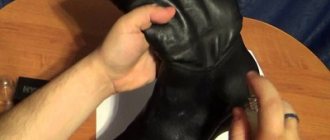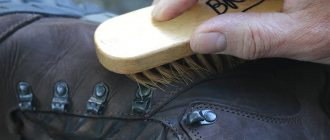- Posted by Lana Tolkunova
- Date: October 10, 2018
Let's start with the fact that shoes are vital for us. Thank God, gone are the days when one pair of boots per family was considered quite normal. In peasant families, of course. Wealthier citizens had shoes made to order to go with each new dress or suit. Tsarina Elizabeth Petrovna, for example, had more than a thousand shoes. Back then, shoes were made exactly to fit the foot, fit perfectly and did not cause any trouble to the owner.
However, a lot has changed since then. Ready-made shoe stores appeared with serial models and standard sizes. But there were no standard people, and there still aren’t. Therefore, now buying comfortable shoes that are beautiful and fit perfectly is not an easy task. You have to sacrifice something. Most often, convenience and comfort are placed on the altar of beauty and fashion. We buy “chic” shoes, even if they squeeze or rub, it’s okay, we’ll tolerate it, and if something happens, we’ll stick a band-aid on it. There is a lot of plaster in the country, but good shoes are worth their weight in gold.
In fact, almost any shoes, with rare exceptions, can be broken in. You just need to know the material from which they are made and how to stretch it. At the same time, the style, purpose, presence or absence of a heel does not in any way affect the choice of how to increase the size of the shoe.
The first thing you need to come to terms with is the fact that it is impossible to increase shoes indefinitely. The maximum that can be achieved without damage or deformation is to stretch it by one size. Keep this in mind when purchasing a new pair. New ones, because well-worn shoes shouldn’t be stretched. The material from which it is made has become rough and will be difficult to stretch, and the seams, on the contrary, are frayed and will easily tear at the first opportunity. If the shoes are slightly worn, it is quite possible to fight.
- 1.1 Freezer to help
1.1.1 Video about the method with a bag and ice
- 2 How to make tight faux leather models wider
- 3 Stretching textile shoes
- 4 Quick life hack - break in shoes in 5 minutes
4.1 Video about the express method of stretching shoes
How to make tight faux leather models wider
Leatherette shoes can be stretched, but with great care
To the question: “How to stretch leatherette shoes?” There can only be one answer: “Gently!”
Artificial leather, unlike natural leather, stretches reluctantly and tends to crack at any moment. To prevent this from happening, use gentle methods to increase the fullness of your shoes.
- Apply Vaseline to the inside of the shoes and leave for two to three hours. Then remove excess Vaseline with a cloth, put it on and wear for half an hour - an hour. If the desired effect is not achieved, repeat the procedure.
- Wet the newspaper (if paper newspapers are ever replaced by electronic ones, housewives will go on a sit-in strike, because half of the household chores will stop due to the lack of the main tool of labor - the old newspaper), and stuff them into a shoe or shoe so that it is completely filled, expanded , but not deformed. Be patient and wait until the newspapers dry, then remove them and throw them away.
Stuff your shoes tightly with damp newspapers
- Pour wheat grain or buckwheat directly into the shoe, add water and leave overnight. In the morning, clean the shoes from the swollen grain, put them on and wear them for an hour.
How to stretch shoes made of different materials
The methods of stretching shoes and the order of this activity largely depend on the specific material.
Leather
You can adjust genuine leather shoes to size using boiling water, bags of water, alcohol or vodka. Thick wool socks or a special stretching spray are also suitable for solving this problem. The other methods described above are not suitable for this material.
Suede
This is leather, but the material has undergone special processing, which has softened its consistency. The raw material is quite sensitive, so aggressive methods are not used in relation to it. Wet socks and specialized products are suitable for breaking in suede shoes. It is customary to use a flannel napkin in the area of the boot. Alcohol or vinegar helps to do the job well.
Leatherette
This is artificial leather that stretches with difficulty. If you go overboard with special products, there is a risk of cracks. To solve this problem, Vaseline, newspapers inserted inside, as well as grain with water - buckwheat or rice - are widely used.
Polished leather
Adjusting such shoes is problematic, and the size can only be increased in width. A mixture of water and alcohol, a hair dryer, or a mechanical method using pads will do.
Textile
It is quite difficult to increase the size of such shoes, but by a few millimeters it is possible. It's best to just walk outside when the weather is wet and then dry your shoes at home. The thermal method is also suitable - boiling water or steam.
Rubber
Traditional rubber does not stretch, but with PVC this method will work. Most often, boiling water is used, which needs to be poured into the shoes for a few minutes to soften the PVC.
Stretching textile shoes
Fabric shoes can be stretched using damp paper
It's hard to believe, but sneakers and canvas shoes can also be too narrow and cause discomfort when walking. To ensure the comfort for which this type of shoe was created, it needs to be stretched.
This can be done using boiling water. Pour it inside the sneaker and pour it out immediately. Put the sneaker on your sock and walk around the house. Just before putting the kettle on the fire, check whether the fabric has faded from the hot water (you can stretch leather shoes in the same way).
If the fabric is at risk of fading, simply stuff torn white paper or newspaper inside, fill it with water and wait for it to dry. When this happens, throw away the paper, put your shoes on your feet and walk around the house for a couple of hours.
Reminder! When breaking in your shoes, try not to sit or stand, but to move, then your feet will not swell and the process will be less painful.
How do the masters do it?
For stretching, workshops have special equipment, machines, pads and other devices.
- The shoes are pre-moistened. To do this, use the same stretchers that we described above, or alcohol.
- If you need to stretch the boot, wedges are inserted, which can be adjusted to the desired size. In this way, the tops can be stretched up to 6 cm. It all depends on the quality of the shoes.
- If you need to increase the lift or beams, insert (drive in) the block and spread it to the desired size.
- Craftsmen often use wooden stretching blocks, which are a good way to stretch problematic shoes. And some people even have pads at home.
As the masters say, sometimes clients come and want to stretch their shoes to a new size. This is unrealistic even in a workshop. Creative masters will definitely find a way out. One of the life hacks is to make an insert, wedges on the boot or instep.
We told you about the most effective ways to break in leather shoes at home. If you have your own secrets, we will be glad to see them in the comments!
Website www.sympaty.net – Beautiful and Successful. Author: Yulia Spiridonova. More information about the site's authors
Quick life hack - break in shoes in 5 minutes
Stretch your shoes in 5 minutes
We put on thick socks and, armed with a hairdryer, for 30 seconds we heat the narrowest places, that is, those areas in which it feels tight. But that is not all. Simultaneously with heating, you need to stretch and arch your foot. We're done. We take off our socks, put shoes on our bare feet, and listen to our feelings. If the shoes are not catastrophically small, but just need to fit your feet, everything will work out.
Video about the express method of stretching shoes
Basic methods
There are three main techniques for stretching shoes.
- Mechanical method. In this case, stretching occurs physically using available means. The method does not require serious equipment, but it can deform the shoes and ruin the appearance, so it is used with extreme caution.
- Chemical method. This option involves exposing the shoe material to chemicals. You can use the products available at home, or you can purchase special chemical compounds that are available in any shoe store.
- Thermal method. It involves the use of too low or too high temperatures, that is, frost or, conversely, boiling water. Under their influence, the shoe material changes its structure and stretches quite quickly.
Which option is right depends on the type of shoe, the material it is made of and the sewing features. With proper use of the described means, you can stretch your boots by 2 sizes - both in length and width. The most pliable, as practice shows, are models made from natural materials (leather, suede).
Stretching rubber shoes
It is unlikely that it will be possible to stretch rubber shoes, but you can stretch PVC shoes
Question: “How to stretch rubber shoes?”
Answer: “No way.”
If it really is made of rubber.
But in our age of high technology, not all that glitters is gold, and not all is rubber that it seems. It is quite possible that it is PVC. In appearance it is no different, but in terms of properties - yes, as they say in Odessa. To establish the truth and reveal what the boots are made of, you need to cauterize them with a hot iron. Only very slightly and in an inconspicuous area. If the surface has melted, you have PVC, polyvinyl chloride, scientifically speaking. We will not delve into the chemical properties of this material; we will only say that it is subject to stretching.
We pour boiling water into the boot and wait until it cools down a little, that is, about 5 minutes. During this time, we manage to put on several pairs of socks and fill the basin with cold water. We pour the water out of the boot and immediately put it on the foot with several layers of socks, after which we place it in a basin with cold water. The PVC material softened by hot water will harden and retain its new shape.
When to stretch your shoes
Shoes need to be stretched when they become uncomfortable and become impossible to wear. Here are the main situations:
- shoes press in width, which makes steps difficult and even painful; if you do nothing, you can “earn” flat feet, bumps on your feet and problems with blood circulation in this area;
- they press along the length, which leads to the appearance of calluses and abrasions, as well as incredible pain; in the absence of timely measures taken, there is a risk of an ingrown nail (“wild meat”), the removal of which will require surgery;
- over time, they “shrink” and become small, in which case the shoes can shrink in length and width, leading to the consequences described above.
In general, you need to stretch your shoes when they are too small and need to go up a size or several sizes. The method of stretching you choose depends on the available capabilities and, of course, the type of shoe.
Controversial methods of removing shoes
There are ways to stretch shoes that need to be approached with caution.
There are several more descriptions of well-known but controversial methods of stretching shoes.
First, tapping with a hammer. The bottom line is that with the help of a hammer, hard problem areas, mainly backs, are broken. The method is common, but it is not suitable for expensive shoes made of delicate materials (suede, textiles, artificial leather), as it can simply ruin them. Soft skin should not be subjected to such a dangerous test either.
Secondly, breaking in boots soaked in soapy water. Experience shows that shoes do indeed wear out, but it is not always possible to get rid of the remaining soap stains, and it is not always possible to maintain their shape.
I take my shoes to a workshop for stretching if necessary. I used to wear them in with soap myself, but after such experiments the shoes lost their shape and my feet hurt later.
Irina 5
https://opyt-of-woman.com/poleznye-sovety/kak-raznosit-novyie-tufli-esli-oni-zhmut
How to quickly break in shoes that are too tight
There are even more radical ways to stretch leather shoes using water. The insoles are removed from boots or shoes, boiling water is poured inside for a few seconds, and then the shoes are worn in for several hours.
This method is used for shoes made from natural or synthetic material.
The next method is based on the physical property of water to expand when frozen. If necessary, unlace tight shoes. Place two sealed plastic bags inside, straighten them, press them against the inner walls of the shoes so that there are no creases or emptiness.
Cold water is carefully poured into an improvised container and the bags are tightly tied. Shoes in another bag are placed in the freezer of the refrigerator overnight
Frozen water turns into solid ice, and, having increased in volume, puts pressure on the leather of the shoe, stretching it.
This is a safe method that does not cause deformation of the shoes.
Sprays and impregnations for stretching shoes
On store shelves there is a wide range of not only aerosols, but also creams that can be used to stretch shoes made of any material.
When selling branded shoes, sellers usually offer to buy stretching agents of the same brand for a new pair of shoes or boots, manipulating that the manufacturer has invented a unique composition that is ideal for this type of material. Based on customer reviews, it became clear that there is nothing special about such sprays; they are no better or worse than other brands, which are also suitable for shoes of any brand.
Top most popular aerosols and impregnations
- Salamander is a universal foam suitable for all types of leather, except for varnish coating, as it is not absorbed.
- Kiwi - suitable for both leather and suede.
- Stretcher - German impregnation suitable for natural and artificial leather.
- Tarado - softens and promotes stretching of leather and suede.
- Twist - suitable for leather, suede and even velor.
Folk remedies and methods of skin removal
It is relatively easier to carry products made from genuine leather when you compare the process with giving the desired shape to artificial material or textiles. Over time, one way or another, the skin will stretch along the leg.
In addition, both correct mechanical action and the use of high-temperature water will help to cope with the problem.
Natural material can be slightly increased in size:
- If you use a cotton pad soaked in alcohol or a regular spray. Both pure formulations and diluted solutions - moonshine, cologne, tinctures - are suitable for these purposes. Alcohol-containing components will quickly cope with the softening of the material, helping to expand it without harming the appearance of the coating. Hard elements, at the same time, acquire softness;
- A thick sock is then put on the foot, onto which you need to pull the prepared pair of shoes.
The same effect is obtained if you wet wool socks with hot water and then put on leather items. After walking around the room a little, take off the pair, and then repeat the procedure the next day, continuing this action until the shoes fit, taking the shape of the feet.
Do you feel a strong desire to parade around in wet socks? Then try the following in practice. Pour alcohol-containing liquid generously over all internal parts, and then crumple up the paper tightly and stuff the internal space with it. If you notice that the paper is wet, change it. The procedure must be continued until the appearance of the shoes is restored.
Another method looks somewhat aggressive when you need to exercise maximum caution by pouring boiling water into tight new shoes. Now you need to quickly pour it out and leave the pair to cool for a while until the temperature of the shoes makes it possible to put them on your feet.
After which it is immediately put on and worn until it is completely dry. This method can only be used if you are completely confident in the naturalness of the product, otherwise you will simply have to say goodbye to this pair for good and buy a new one.
The main secrets of breaking in tight shoes
- Break in your shoes gradually, 2-3 hours a day.
- It is better to cover areas that may rub in advance with a band-aid.
- The backdrop can be lubricated with alcohol, Vaseline or castor oil. These compounds will make it softer.
- To stretch suede and patent leather, it is better not to use options with hot water, steam and freezing.
- Alcohol for breaking in shoes can replace table vinegar.
- Instead of boiling water, you can use beer, which is no less effective at softening the skin and stretching the shoes.
- After rain, do not place shoes on the radiator. It is better to dry it with a hairdryer (cold air).
- The method with wet socks will work better if you wet them not with cold water, but with hot water.
- Buy shoes after lunch, when your feet are already a little full and tired.
Source











